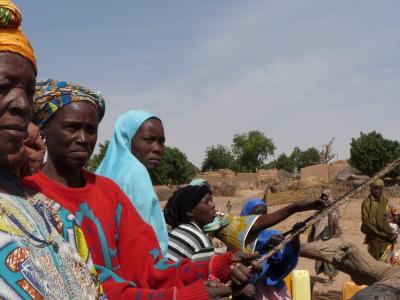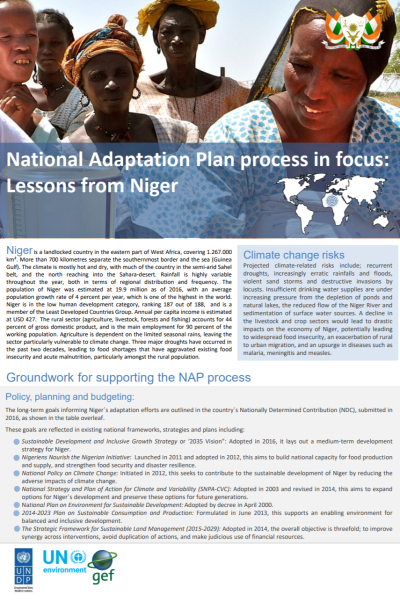The climate in Niger is of the Sahelian type characterized by a great inter-annual rainfall, which has been expressed by multi-year droughts since 1968.
Major adaptation activities include, development of the concerted management of water through management committees for national waters basin and through joint-commission and multilateral bodies for trans-border waters and the improvement of knowledge about the great fossil aquifers prior to a balanced exploitation.
Niger is a sahelian landlocked country whose nearest point to the sea is about 600 km. It covers a surface area of 1,267,000 sq km. It is located between the longitude 0°16’ and 16° East and the latitude 11°1’ and 23°17’ North. The three fourths of the country’s land area are occupied by deserts among which the Ténéré, one of the most wonderful deserts in the world.
The country’s economy is mainly based on agriculture and cattle breeding . Furthermore, soils are generally poor and the area potentially suitable for crop production, estimated at 15 millions hectares, represent 12% of the country’s total surface area. These lands, mainly covered by dunes, are not very productive and are sensitive to water and wind erosion.
The potential of irrigable land is estimated at 270,000 hectares of which 140,000 hectares in the river Niger valley. Niger population was estimated at 11,060,291 people in 2001 (General census, 2001). Mainly rural, the populations draw most of their incomes from natural resources exploitation.
The growth rate of the population is one of the highest in the world. It was about 3.3 % in 2001. This population growth combined with difficult climatic conditions (droughts) and inadequate and not very rational use of natural resources led to ecological imbalances expressed by the deterioration of livelihoods.
According to the trends from national statistics, the population will reach 17.3 millions by 2015 and 24.1 millions by 2025.
Active Projects
Projects Completed
Latest Updates
See allLatest Publications
See allThis briefing on the process to formulate and implement the National Adaptation Plan in Niger considers firstly the country context and the…










